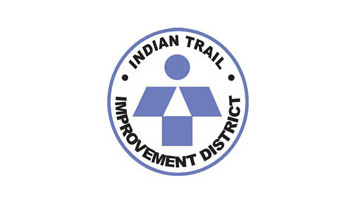In a workshop on Wednesday, Dec. 9, the Indian Trail Improvement District Board of Supervisors discussed a cost-saving plan to stabilize dirt roads with recycled asphalt millings.
Operations & Maintenance Director Jason Lester pointed out several advantages to millings, including cost effectiveness, reduced dust and better-defined edges. ITID’s existing 19 miles of milled surfaces have shown a 10- to 15-year lifespan before resurfacing is needed, he said, as opposed to rock that needs periodic grading.
Lester estimated the 10-year cost of millings-treated roads would be about $5.1 million for the 289 miles of district roads, compared to $20.5 million for dirt roads due to the lower cost of millings and reduced need of depth of covering. He explained that 6.5 inches of FDOT-approved road rock is equivalent to 5 inches of millings.
“You have to apply more quality rock than you have to for millings,” he explained.
The 10-year cost for a quarter mile of dirt road is $10,428 compared to $7,744 for a millings road, and the 10-year maintenance cost is $13,200 for dirt compared to $3,291 for millings, he said.
“One thing I haven’t captured is the cost of our guys constantly in the swales scooping out the sediment, clearing out the pipes of the dirt that has migrated to the swales,” Lester said.
ITID President Betty Argue said she felt the district’s policy of requiring residents to petition for millings was standing in the way of getting the roads done.
“Personally, I think we should take those qualifications away, and if somebody who is doing the petition wants their road milled, build the road,” Argue said.
Lester said millings should be readily available due to the state’s five-year turnpike resurfacing project, along with the many ongoing road projects in South Florida, and the likelihood of the U.S. Congress passing a large infrastructure bill.
He proposed that property owners be sent notices two months in advance, and response must be received 30 days in advance if they object to millings. If 51 percent or more of owners on a road object to millings, it would not be done. He also noted that the district has received very few complaints about flooding or washouts on the milled roads.
For equestrians who may object to walking their horses on a milled road, he said the district has worked with the Treasure Coast Regional Planning Council to create miles of multipurpose trails separated from roadways that avoid crossing roads. Most of the proposed trails are located on canal banks and boundary easements.
Lester said the work could be done in-house by the two existing road crews over 15 years, or in a shorter time by adding one or more crews.
Argue favored implementing some sort of millings plan.
“In order to maintain the level that we’re at, which is actually not satisfactory for the board or the community, we’re not getting enough material on the roads right now,” she said. “We’re not creating an optimum based on the traffic, and we’re not addressing those issues long-term.”








